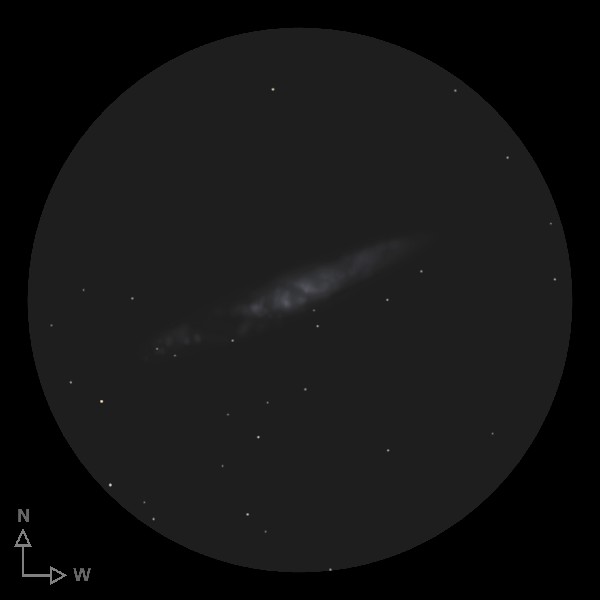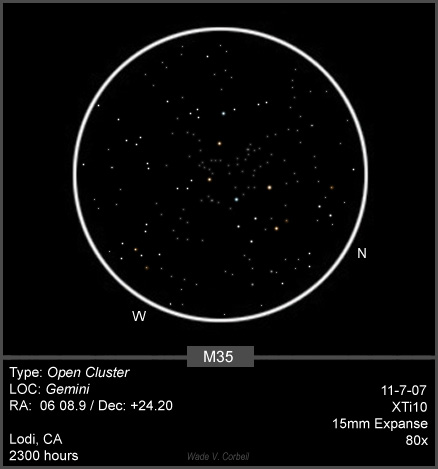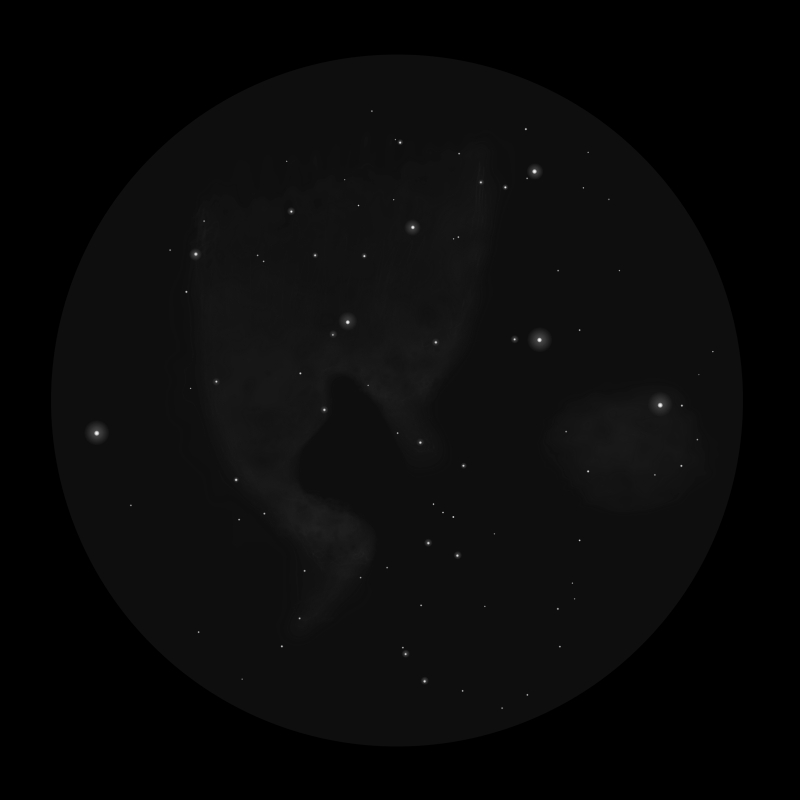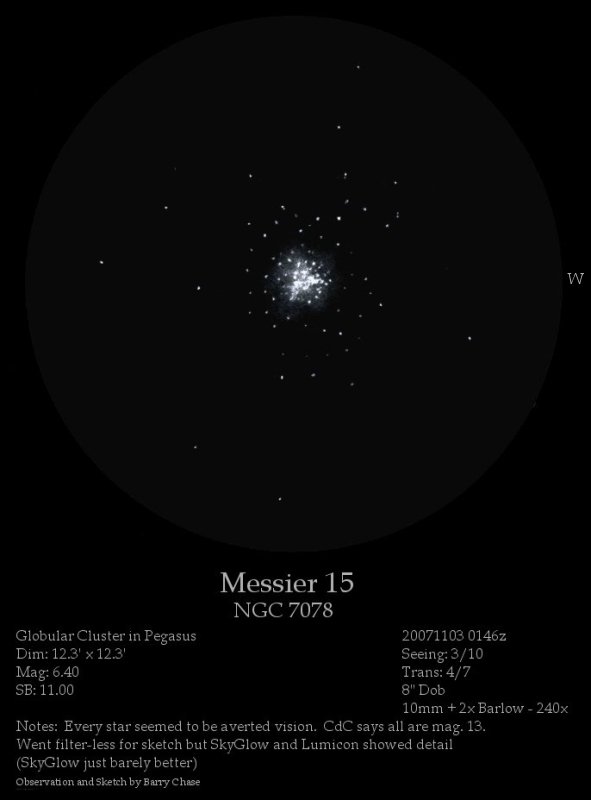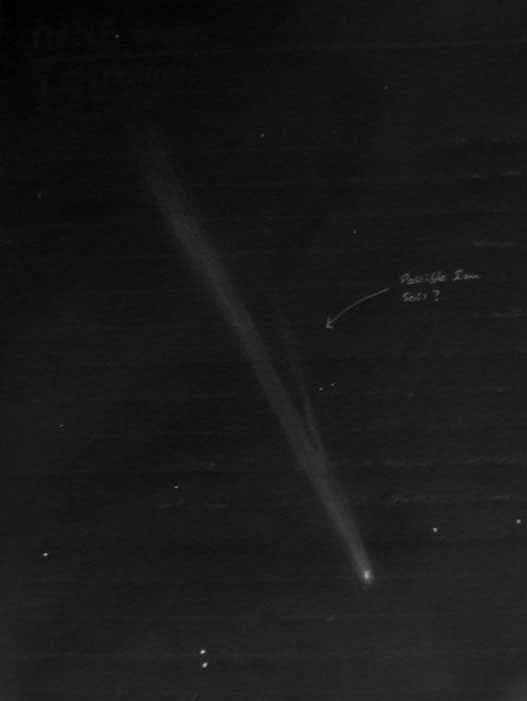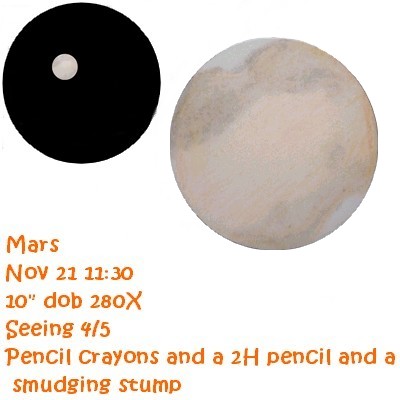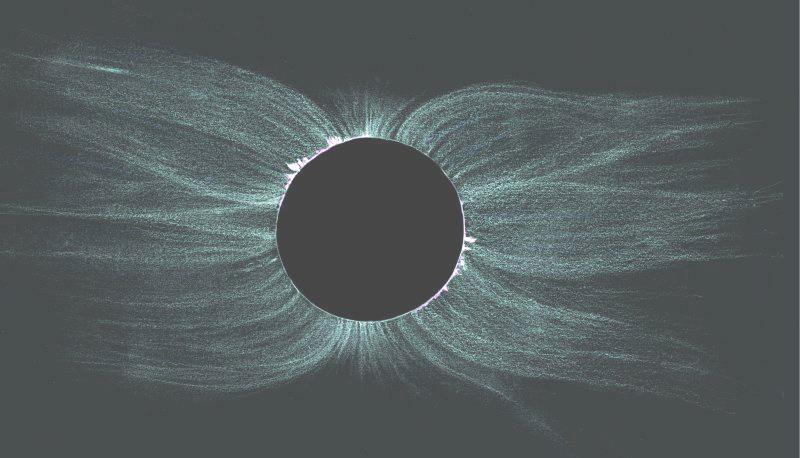NGC 55
Edge-on Barred Magellanic Galaxy in Sculptor
By Eric Graff
Parks Astrolight EQ6 • 6″ f/6 Newtonian Reflector
15mm Parks Gold Series Plössl • 60x, 52′ Field of View
11 October 2007 • 05:30-06:30 UT
The late Walter Scott Houston wrote, “Some deep-sky objects offer beautiful, breathtaking visual experiences. NGC 55 is one such object.” Christian Luginbuhl and Brian Skiff call this galaxy “one of the most interesting and detailed in the sky.” Stephen James O’Meara named it “one of the night sky’s finest wonders.” Clearly, this galaxy has something of a reputation. As I slewed my scope toward 2nd-magnitude Alpha (α) Phoenicis (my guide star for this particular object), I wondered if the view would live up to the high praise these respected observers offered up to this edge-on Magellanic-type galaxy on the southern border of Sculptor.
Centering the golden giant Alpha Phe in my 30mm eyepiece, I quickly located NGC 55 by offsetting my scope 2° west of Alpha and sweeping a little over 3° north. Star-hoppers may wish to follow a ragged line of 6th-7th magnitude stars northward from Alpha Phe and then west toward the galaxy.
Despite its southerly declination (culminating only 18° above my southern horizon), NGC 55 is indeed a stunning sight in the eyepiece. This large, bright galaxy displays a fascinating degree of detail including its three “nuclei”, extensive mottling (particularly in the bright, central region), and a reticulated network of dark lanes.
James Dunlop discovered NGC 55 on August 4, 1826. Distance estimates range from 4.2 million light-years upward toward 7 million light-years (with the smaller distance estimates being more current). Most astronomers place NGC 55 in the Sculptor Group of galaxies, but some have suggested that NGC 55 (together with NGC 300) are foreground objects and members of our own Local Group of galaxies.
Information provided by Eric Graff

